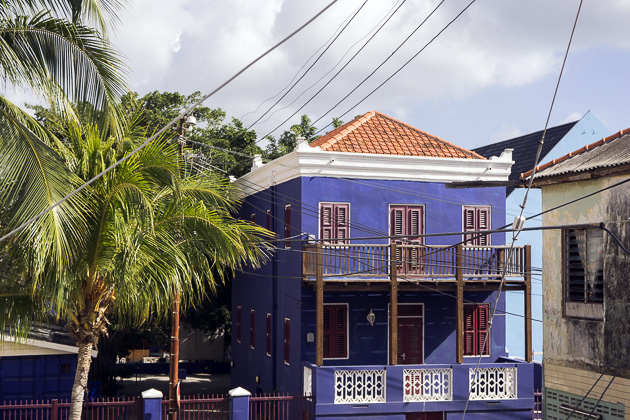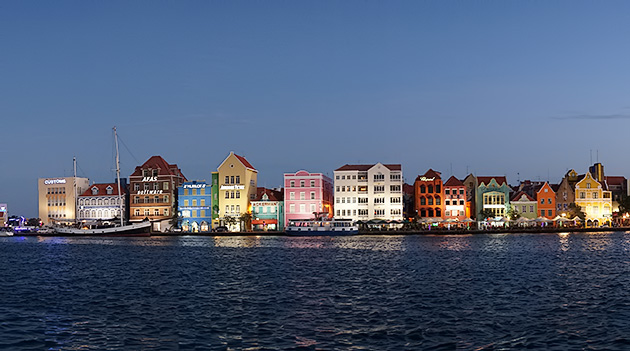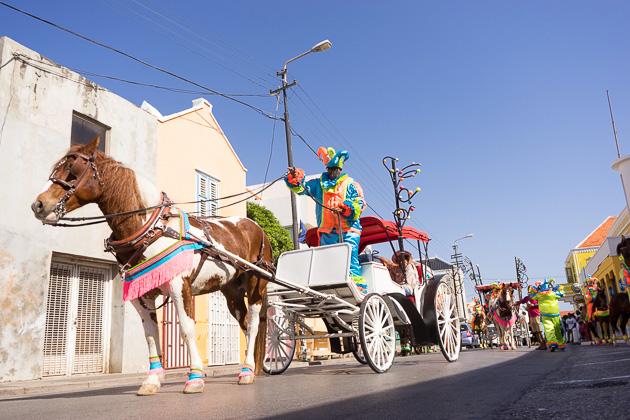First Impressions of Willemstad
Willemstad is the capital of Curaçao and by far its largest city, with about 98% of the island’s total population. In many respects, Willemstad is Curaçao. And for 91 days, it would also be our home.

Willemstad was founded by the Dutch West India Company in 1634, immediately after the Netherlands took over Curaçao from Spain. The city has preserved much of its colonial architecture and style, prompting UNESCO to name it a world heritage site in 1997.
The location for Willemstad was chosen because of the Schottegat, a large natural port which connects to the Caribbean by way of the Saint Anna Bay. It was ideal geography for the sea-faring Dutch, who settled down on the bay’s eastern side, and began constructing a neighborhood that wouldn’t look out of place in Amsterdam. This eastern section, known as Punda, is the oldest of Willemstad’s four historic districts.
Once Punda became overcrowded, in the early 19th century, people started to populate the western side of the bay. This new neighborhood was called Otrobanda, literally “other side,” and presents a slightly different style of architecture to that of Punda. Today, Otrobanda is considered to be Willemstad’s cultural heart, where locals come to shop, eat and party.

The other two historical districts are smaller, but still of interest. To the east of Punda, Pietermaai is where the Dutch ship captains and officers settled. This neighborhood is notable for its proximity to the sea, old theaters, and neoclassical architecture. Finally, there’s the Scharloo, just north of Punda, across the Waaigat Bay. This was home to the upper-crust of Curaçaoan society, and still preserves many of its colonial mansions.
We spent our first day in Curaçao walking around the capital city. The first thing I noticed was the city’s outrageous color scheme. Almost every building in Willemstad is a different shade of blue, yellow, green or red. This rainbow array is actually mandated by law in Curaçao — before 1837, when sunglasses were not yet in widespread use, the buildings had been completely white, and the glaring sun caused headaches and eye problems. The colors helped, and the law has stuck around into the present day. Curaçaoans seem to take great pride in their buildings; we often saw homeowners at work repainting their houses.

After the color, the next thing I noticed was the music. Our first excursion into Willemstad was on a Saturday afternoon, and cumbia, samba and salsa were blasting out of houses, booming from the windows of passing cars, and being played by bands at touristy restaurants. We even saw a DJ who had set up on a regular street corner in Otrobanda. Curaçaoans apparently enjoy living with a constant soundtrack of feel-good rhythms.

Other random first impressions: there seem to be as many tourists as locals, but this surely waxes and wanes whether a cruise ship is in port. The family across the street from us owns a rooster. Policeman are rare, though there are a lot of security guards protecting higher-end shops. Also, there are plenty of dogs but we hardly saw cats. And there’s all types of income-levels: During our first week in Willemstad, Microsoft founder Paul Allen’s yacht, the Tatoosh, was docked in the bay (this is a boat which comes equipped with multiple other boats and a helicopter). I was admiring it, when a crazy-eyed guy with a yellow beard and an apparent drug habit came up to me. “What a boat! Hey man, you have a guilder?”
With all the music, the people randomly dancing, the bars spilling out onto the streets, the festive atmosphere, the sun’s warmth, and the brightly-colored houses, Willemstad is certainly not a city for those who enjoy being dour. There’s nothing gray about it, and it would be difficult to stay in a bad mood once you’re outside and mixed up in the happy-go-lucky vibe. In fact, during the extent of our stay in Willemstad, I don’t think I had a single grumpy day. That can’t possibly be true, but it’s how I remember it… and I guess that’s all that matters, now.








